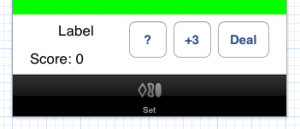Please note, this blog entry is from a previous course. You might want to check out the current one.
Add a private property of type Deck * to the CardGameViewController
If you have added test code for the last task, don’t forget to remove it …
… import the deck class and add the property.
#import "Deck.h" ... @property (nonatomic, strong) Deck *deck;
… nothing more to do for this task …
The complete code is available on github.
